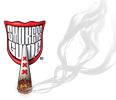DEA vs CBD - New Rules on Cannabis Extracts in the USA
In a quiet move against legal CBD and cannabis extracts the United States Drug Enforcement Administration published a new final rule regarding the “Establishment of a New Drug Code for Marijuana Extract.”
As published on the Federal Register on December 14, 2016:
“After careful consideration of all comments, the DEA is hereby amending 21 CFR 1308.11(d) to include a new subparagraph (58) which creates a new code number in Schedule I as follows:
‘(58) Marihuana Extract—7350
‘Meaning an extract containing one or more cannabinoids that has been derived from any plant of the genus Cannabis, other than the separated resin (whether crude or purified) obtained from the plant.’ ”
21 CFR 1308.11(d) is Code of Federal Regulations Title 21 Chapter 11 Part 1308; a list of Schedule I substances.
According to the DEA, “Schedule I drugs, substances, or chemicals are defined as drugs with no currently accepted medical use and a high potential for abuse.” Paragraph d covers “Hallucinogenic substances”, and includes "Marihuana" and "Tetrahydrocannabinols" as "Hallucinogenic substances" - despite lack of evidence that cannabis, in any form, is hallucinogenic. Also the 28 states where medical use of cannabis is legal may also disagree with the definition of Schedule I.
This means an extract containing any cannabinoids would be a schedule I substance; including CBD! CBD, unfortunately, is what this law seems to target.
All forms of “Marihuana” are illegal under federal law; including CBD, so it’s interesting that the DEA has only now decided to create a new category for extracts. According to the DEA “this code number will allow DEA and DEA-registered entities to track quantities of this material separately from quantities of marihuana.”
Confusion arises around the legal status of CBD derived from industrial hemp, as this law would seem to include all cannabis extracts. When questioned about CBD the DEA responded, “For practical purposes, all extracts that contain CBD will also contain at least small amounts of other cannabinoids. However, if it were possible to produce from the cannabis plant an extract that contained only CBD and no other cannabinoids, such an extract would fall within the new drug code 7350.” Which would also appear to be in conflict with the many states that have enacted laws to allow the medical use of low THV high CBD oil.
That being said, since the 2014 US Farm Bill was passed and signed it became legal to grow industrial hemp in states where it has also been legalized. Industrial hemp is defined as “the plant Cannabis sativa L. and any part of such plant, whether growing or not, with a delta-9 tetrahydrocannabinol concentration of not more than 0.3 percent on a dry weight basis.” Surely any products made from industrial hemp, including extracts would be legal. This would seem to contradict the DEA’s new rule, but this new rule does not have the power to overrule and void an act of congress. Hemp is not the only problem the DEA has; their funding has been stopped by congress who have told the DEA that funds will not be available to prevent use of medical marijuana in states where it is legal under the Rohrabacher-Farr Medical Marijuana Amendment. Suggesting that in medical marijuana states patients will still be able to access extracts... IF the forementioned amendment is renewed.
State laws also play a vital part, of course cannabis is federally illegal yet over half of the USA’s states have legalized medical use of cannabis and some has even legalized the recreational use of cannabis for adults. The courts seem to be defending states’ rights on this issue. Recently a federal appeals court; The 9th Circuit in San Francisco, ruled that the U.S. Department of Justice could not spend money on prosecuting federal marijuana cases as long as people complied with all of the state’s rules and regulations regarding cannabis within that state.




 420 Canada Parties Ripped!
420 Canada Parties Ripped!
 RIP Franco Loja, The Strain Hunter, 1974-2017
RIP Franco Loja, The Strain Hunter, 1974-2017
 Closed Amsterdam Coffeeshops to Reopen!
Closed Amsterdam Coffeeshops to Reopen!
 Amsterdam Unity Cup 2016 Results
Amsterdam Unity Cup 2016 Results





